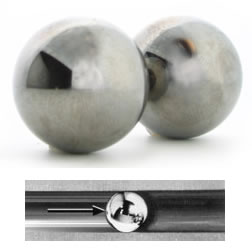
Tooling balls are commonly used in the manufacturing industry. Also known as construction balls, they typically consist of a smooth and a round metal ball that’s attached to a cylindrical shaft or stem. Unless you’ve used them in the past, though, you might be unfamiliar with their operation. To learn more about tooling balls, including how they work, keep reading.
What Are Tooling Balls?
Tooling balls are simple devices that are used to create a reference point for machinery. Machinery operations, of course, require proper measurements. You’ll have to align a workpiece in the appropriate area. With a tooling ball, you’ll have a reference point for the necessary alignment. The center of the tooling ball will create a reference point for machinery operations.
Benefits of Using Tooling Balls
What benefits do tooling balls offer? For starters, they are highly accurate. You can use tooling balls to properly align workpieces. As previously mentioned, they will create a reference point for machinery. The reference points create by tooling balls is highly accurate.
There are also different types of tooling balls. Some of them are fixed, whereas others are adjustable. Adjustable tooling balls have an adjustable shaft. You can raise or lower the shaft to accommodate your application.
Tooling balls are long-lasting. You can find them in durable materials, such as tungsten carbide. Tungsten carbide tooling balls are strong, durable and resistant to corrosion. Other tooling balls are made of carbon steel. Carbon steel offers a superior level of strength, though it lacks the corrosion-resistant properties of tungsten carbide.
You can even order tooling balls in custom sizes. Different machinery operations require tooling balls of different sizes. If you’re unable to find a tooling ball in the necessary size, you may want to order a custom-sized tooling ball. The shape and size of tooling balls can be customized.
How Tooling Balls Work
Tooling balls work by creating a visual reference point. When installed, you can use them for machinery operations. Tooling balls will simply create a reference point that you can refer to when performing a machinery operation, such as milling.
In Conclusion
Tooling balls are one of the most popular solutions for creating machinery reference points. They are typically chrome metal balls that are attached to a stem. With tooling balls, you can create visual reference points for a variety of machinery operations.
